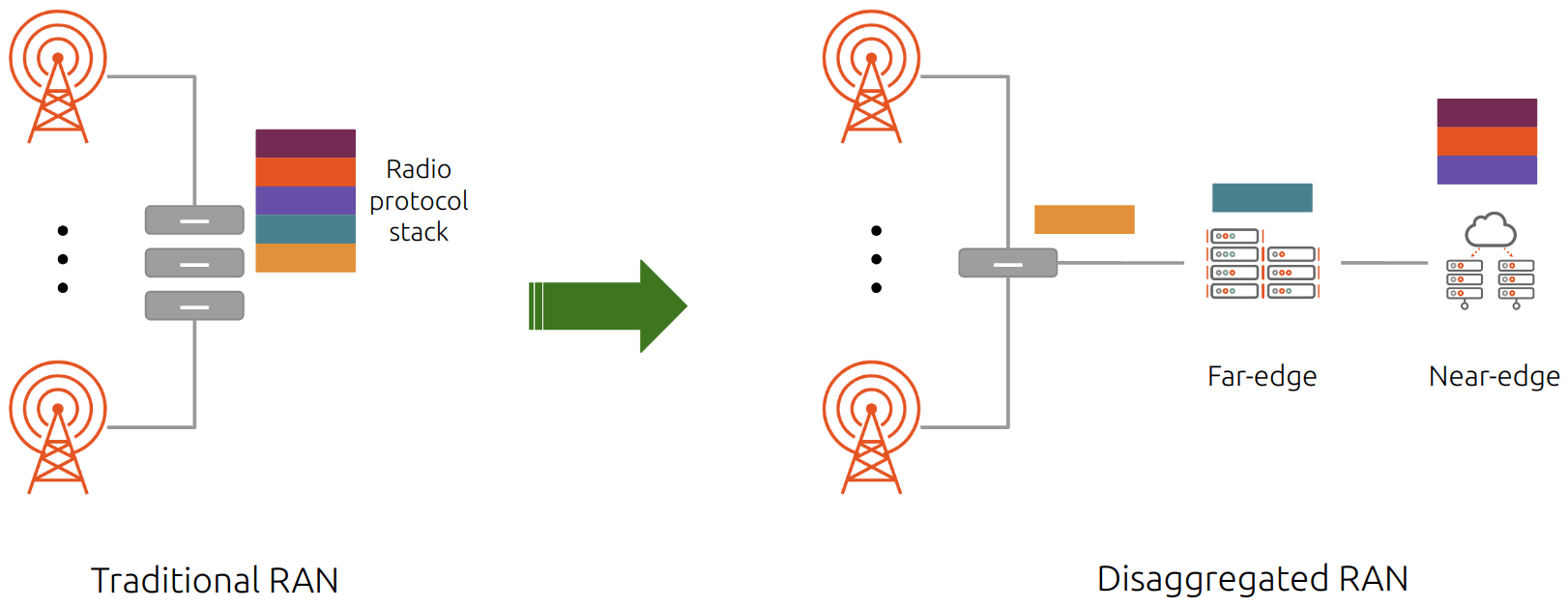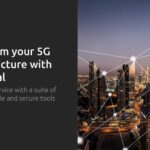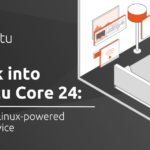In the realm of telecommunication, the concept of Open Distributed Networks (RAN) has garnered significant attention in recent times. This discourse aims to shed light on what Open RAN entails, why it marks a pivotal technological evolution, and the implications it holds for the telecommunications ecosystem. It serves as the inaugural segment of a series of insights delving into this prevalent subject matter.
Wireless Communication Grid
To comprehend the significance of Open RAN, it is imperative to grasp the framework on which it operates. Hence, let’s commence by succinctly defining a wireless network. In essence, wireless networks offer a connectivity solution that facilitates wireless communication functionalities to a myriad of devices. These include but are not limited to smartphones, tablets, laptops, alongside various machines, gadgets, and Internet of Things (IoT) contrivances endowed with communication capabilities.
The significance of a wireless network transcends merely furnishing voice calls and Internet connectivity to conventional devices. It extends to offering diverse data services to a broad spectrum of machinery, devices, individuals, and enterprises. Whether these devices are stationary or in motion, the network is engineered to provide them with uninterrupted connectivity. This feat is feasible owing to the radio access network (RAN) infrastructure enveloping an expansive domain, such as an entire nation, complemented by a central core network situated in a data center, functioning as the nerve center of the entire wireless network. The core network executes control functions on user data traffic to uphold the service quality levels that users have subscribed to receive.
Wireless Connectivity Grid
Now, let’s delve a bit deeper into the RAN, which essentially comprises an amalgamation of radio towers and data processing components. Broadly speaking, RAN operates as the intermediary between mobile devices and the core network, facilitating the exchange of information between a user’s mobile device and data services hosted elsewhere. It facilitates the transmission of user requests for services in the uplink to the wireless network, including content uploaded by users and downloaded by user devices like video streams.
In the uplink progression from mobile devices to data networks, radio waves carry the information and signals dispatched by devices to the network. These radio signals are intercepted by radio equipment stationed on radio towers, subsequently transformed into digital signals within the RAN. The data contained within these signals is forwarded to the mobile core network in data packets. The core network then transmits these packets to services operating over the Internet or data networks.
Conversely, in the downward trajectory, known as the downlink from data networks to mobile devices, the inverse mechanism unfolds: data from services on the Internet or other data networks undergo processing in the core network and RAN, before being relayed to mobile gadgets.
Decentralized RAN
Traditionally, a RAN is erected using equipment-like purpose-built hardware. A segment of the RAN is integrated into radio towers as radio units, while the remainder is stationed in data centers to execute central data processing functions. The RAN hardware at data centers runs the entire telecommunication software array of the RAN as a unified processing unit, carrying out all processing tasks except for the fundamental radio frequency (RF) operations managed at radio units. In the context of LTE/4G, the processing unit of a RAN is termed a baseband unit (BBU), whereas in the context of 5G, it is denoted as a gNodeB.

The latest evolution in RAN technology revolves around segmenting the software stack of a gNodeB into independent components. Analogous to the progression witnessed in modern software frameworks, transitioning from monolithic software structures to more modular configurations comprising microservices, each dedicated to executing a set of correlated tasks. The rationale behind orchestrating a decentralized RAN resides in fostering modularity, offering an array of advantages to telecommunication operators and the telco ecosystem at large.
Merits of a Decentralized RAN
Primarily, a decentralized RAN permits the relocation of segments of the software stack to sites far removed from the central cloud towards the radio towers, housing them in edge clouds. This configuration enables those segments of the software stack necessitating swift interaction with radios to be situated in close proximity to the radios, culminating in expedited data transmission and reception.
If an operator were to deploy a complete gNodeB radio stack replicated at every radio site, it would culminate in an exorbitant and inefficient deployment strategy. Maintaining and overseeing a multitude of gNodeBs over a network of dispersed remote radio sites scattered across an extensive geographical expanse would prove unwieldy and economically unviable.
Instead of a complete gNodeB software stack, a decentralized RAN facilitates pushing only those components of the stack that can be located at the edge towards edge clouds, disseminating them among multiple proximate radio sites. This deployment framework strikes a balance between enhancing performance by running a portion of the radio stack at the edge, while concurrently curbing capital expenditures (CAPEX) and operating expenses (OPEX) by sharing common stack components across clusters of radio sites in a hierarchical structure.
Another advantage resides in the fact that since a decentralized RAN stack is structured as a series of discrete units, multiple vendors can introduce their innovative solutions tailored for distinct segments of the software stack. This stimulates the RAN technology arena with fresh entrants, fostering heightened competition. By cultivating a richer marketplace for sourcing equipment, operators can slash their CAPEX in RAN installations, courtesy of intensified competition giving rise to lower equipment costs.
Last but not least, individual segments of the radio stack can be updated and enhanced autonomously without necessitating alterations to the entire software stack every time a particular component mandates modifications. This modular construct reduces OPEX linked to equipment updates and enhancements, enabling granular operations to be conducted at various segments of the RAN independent of one another.
Accessible RAN
The advantages of a decentralized RAN can only be materialized if the industry collaborates harmoniously to deliver the constituents constituting these diverse segments that collectively formulate a holistic RAN structure. This endeavor is achievable through standardization, where components are entirely interoperable. Analogous to any system where discrete units may originate from diverse vendors, establishing standardized interfaces between decentralized RAN components serves as the cornerstone for interoperability and seamless system integrations.

Open RAN was conceived with a straightforward objective: achieve a decentralized RAN boasting open standard interfaces. The Third Generation Partnership Project (3GPP), the industry’s standardization entity responsible for publishing mobile telecommunication network standards, delineated various options concerning how the radio software stack could be fragmented into distinct components. This initiative was further spearheaded by the O-RAN Alliance, outlining standard and open interfaces for decentralized RAN components.
Empowered by open standard interfaces, vendors can now fashion different segments of the radio stack as either hardware or software, with the certainty that products from assorted vendors can seamlessly communicate with one another, serving as building blocks of a comprehensive RAN network.
Synopsis
Telecommunication operators are in pursuit of novel methodologies to attain cost-efficiency in their infrastructure, with RAN constituting a substantial portion of their deployment and operational expenses. Open RAN furnishes a groundbreaking architecture aimed at fulfilling the cost reduction objectives in CAPEX and OPEX that operators aspire to achieve. With a decentralized architecture, Open RAN nurtures a broader RAN vendor ecosystem, curbing equipment expenses in the long run by instigating heightened competition in the market through the advent of innovative products designed for diverse segments of the radio software protocol stack. A decentralized RAN will also usher in novel capabilities for deploying, updating, enhancing, and maintaining RANs more efficiently, culminating in reduced OPEX. The flexibility afforded by deploying segments of the RAN in shared edge cloud locations bestows performance advantages upon contemporary edge computing services that mandate swift interactions.
In the forthcoming segment of this series, we will delve into how network functions virtualization and cloud-native software operational principles complement and amplify the advantages of Open RAN for operators and the telecommunications industry.
Connect with Us

Reach out to us for all your telecommunication deployment requirements and your transition to open source in mobile networking. Canonical provides a comprehensive stack for your telecom infrastructure. To explore more about our telecommunication solutions, visit our webpage at ubuntu.com/telco.
Further Insights
What constitutes a telco cloud?
Introducing automation to telecommunication edge clouds on a large scale
Swift and reliable telecommunication edge clouds leveraging Intel FlexRAN and Real-time Ubuntu for 5G URLLC scenarios











